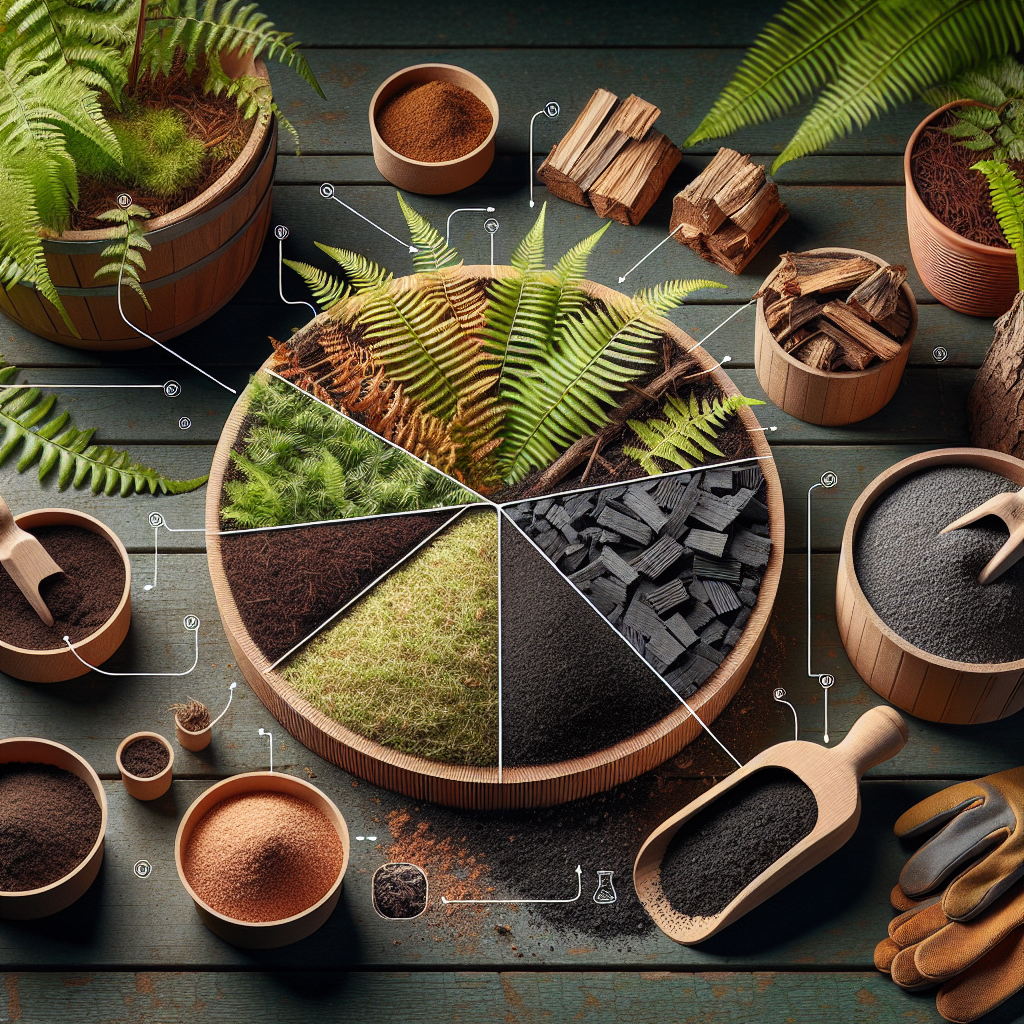Ferns are a popular choice for adding lush greenery to indoor spaces, and they can thrive in containers when given the proper care and maintenance. One key factor in successfully growing ferns in containers is choosing the right soil mix. The soil mix you choose will directly impact the health and growth of your ferns, so it’s important to select a blend that provides the right balance of nutrients, moisture retention, and drainage.
When selecting a soil mix for ferns in containers, it’s essential to consider the specific needs of these plants. Ferns are typically found in forest environments where they receive filtered light and consistent moisture. As such, they prefer a soil mix that is rich in organic matter and provides good drainage while retaining moisture.
One common mistake many people make when planting ferns in containers is using regular potting soil, which is often too dense and does not provide adequate drainage for ferns. Instead, it’s best to use a specialized fern potting mix or create your own blend using a combination of ingredients that mimic the natural environment of ferns.
One key component of a good soil mix for ferns is peat moss or coconut coir. These organic materials help retain moisture while also providing aeration for the roots of the plants. Peat moss is particularly effective at holding onto water without becoming waterlogged, making it an ideal choice for ferns that prefer consistently moist soil.
Another important ingredient to include in your fern soil mix is perlite or vermiculite. These lightweight materials help improve drainage by creating air pockets within the soil mix, preventing it from becoming compacted and allowing excess water to escape more easily. Perlite and vermiculite also help prevent root rot by ensuring that water does not pool at the bottom of the container.
In addition to peat moss or coconut coir and perlite or vermiculite, you can also add compost or well-aged manure to your fern soil mix for added nutrients. Alternatively, you can use a slow-release fertilizer specifically designed for acid-loving plants like ferns to ensure they receive all the essential nutrients they need to thrive.
When mixing your own soil blend for ferns in containers, aim for a ratio of approximately 2 parts peat moss or coconut coir to 1 part perlite or vermiculite, with compost or fertilizer added as needed. Mix these ingredients together thoroughly before filling your container with the finished blend.
It’s important to choose a container with adequate drainage holes at the bottom to prevent water from pooling around the roots of your ferns. Be sure to water your fern regularly but allow excess water to drain away completely each time to avoid overwatering.
In addition to providing the right soil mix, there are some other factors you should consider when growing ferns in containers. For example, most ferns prefer indirect sunlight rather than direct sun exposure, so be sure to place your container in a location where your plants will receive filtered light throughout the day.
You should also monitor humidity levels around your container-grown ferns since these plants prefer high humidity environments similar to their natural habitat in forests. You can increase humidity by misting your plants regularly with water or placing a tray filled with pebbles and water beneath their container.
Regularly check your container-grown ferns for signs of pests or diseases such as spider mites or fungal infections, which can quickly spread if left unchecked. If you notice any issues with your plants, isolate them from other houseplants immediately and treat them with an appropriate insecticide or fungicide as needed.
By choosing the right soil mix for your container-grown ferns and providing them with proper care and maintenance, you can enjoy lush greenery indoors year-round. With their graceful fronds and easy-care nature, ferns make an excellent addition to any home décor scheme. Just remember that each type of plant has different needs when it comes to their growth medium so make sure you do some research before planting any particular type!













